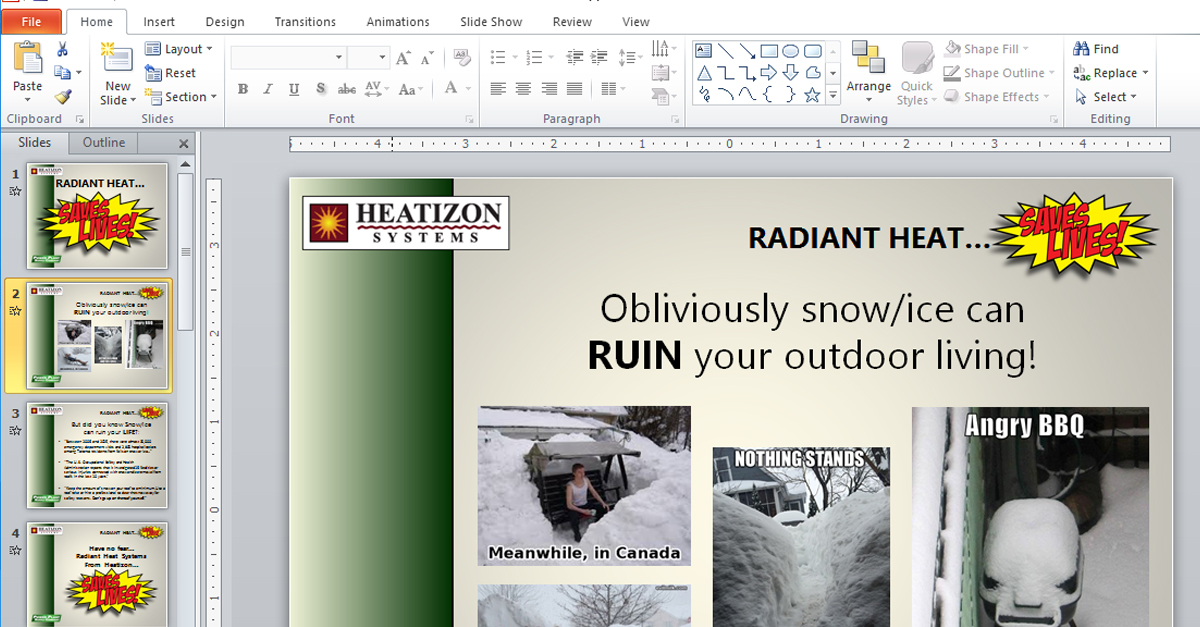Toasty toes: Radiant Floor Heating Warms Tiles from Below
Northern Virginia Daily
by Sally Voth, Daily Staff Writer
28 September, 2007
There’s nothing like a hot bubble bath on a frigid winter’s night. And, nothing snaps you back to reality faster than stepping out of the tub and onto a cold tile floor. These days, fewer people are experiencing the discomfort of cold feet. That’s thanks to floors being warmed with radiant heat.
A room at the Old Waterstreet Inn, at 217 W. Boscawen St. in Winchester, with heated tile floors in the bathroom, is especially popular in winter, innkeeper Jeannie Faith said.
“They love it,” she said. “It’s very nice when you step in in the morning or the evening, and it’s warm under your feet. It’s very efficient. It actually helps with the heating bills to have it. We’re actually considering building a house in the next five years, and we will definitely put the radiant heat in when we build. “It gives a whole coziness to the room that you don’t have otherwise.” Faith and her Norwegian husband have a cabin in Norway with radiant heat in the bathroom and kitchen.
“In Norway, they would never put a tile floor down without radiant heat,” she said.
WarmQuest, based in Salt Lake City, sells two types of radiant heating systems, Tuff Cable and ZMesh, said Ryan Bench, the company’s Web master. ZMesh is a 12-inch-wide bronze screen heating element that is no thicker than screen-door material, he said. It can go underneath carpet, hardwood floors and tile. The Tuff Cable is for tile and cemented floor coverings and causes a little floor buildup, Bench said. According to heatizon.com, Tuff Cable uses a 10-gauge coated copper cable. Heatizon manufactures Tuff Cable and ZMesh.
With the ZMesh there’s virtually no buildup, he said, and it’s nailed or stapled in place, so long as there’s no conductive material where the nailing or stapling would go. “[Radiant heat] heats up the floor, and then it starts heating up the objects that are on the floor,” Bench said. “So, it’s not heating up the air. It’s heating up the objects instead. Also, objects radiate out the heat.
“All the power that goes in, goes back to the transformer and makes it pretty much a loop.”
Both of WarmQuests’ systems are low-voltage, he said. “It has a step-down transformer with a control box that converts high-voltage to low-voltage,” Bench said.
About 12 to 15 volts are put out per square foot. Putting in radiant heat is popular in remodeling jobs, Bench said. The company also uses it for de-icing and snow melting in roofs and driveways. The Tuff Cable goes in driveways and ZMesh under asphalt roof shingles.
The spaces they are used for vary. “We have systems for small bathrooms 110 square feet and less,” Bench said. “We also have systems for as big as you want to go. Some people put it in their entire house for their primary heat source. Some people supplement their heat source with it. A lot of it’s new construction as well. It’s starting to get really popular.“It’s economical to run, depending on what your kilowatt hour rate is. [It] usually cuts down on utilities, especially if it’s supplementing the heat source.”The larger the area of the house being heated with radiant heat, the cheaper the square-foot price, he said. For instance, a 110 square-foot bathroom might cost $10 to $12 per square-foot, compared to $8 per square-foot for larger areas.A different style of radiant floor heat, hydronic radiant heat, is used by Whittington Construction Co. in Front Royal. Water is used either from the home’s hot water heater or a separate boiler system, Steve Whittington said. It runs through tubing in the flooring.
He said this system has been installed in two or three of the custom homes the company has built. “It’s just coming to this area,” Whittington said. “It’s been slow-moving up here because the cost is quite a bit more. It’s the initial installation cost.”
He said the system was installed throughout an entire house that had concrete floors, while another house just had it on the first floor, in the great room, kitchen and bathrooms.
“The one that I’m working on now is going to be in the bathroom, kitchen and eating area,” Whittington said. This latest home has piping that’s already integrated into the subfloor when the panels are bought. It is known as warmboard, Whittington said. There are several benefits to radiant floor heat, he said. “When you get up in the morning, if you have hardwood floors, or if they’re [a] non-carpet surface, these are really more comfortable, and really, it’s more even heat,” Whittington said. “Radiant heat heats up the whole mass, and it radiates from that point to heat the entire mass up. With forced-air heating, you have hot spots and cold spots.”
R Contact Sally Voth at svoth@nvdaily.com
